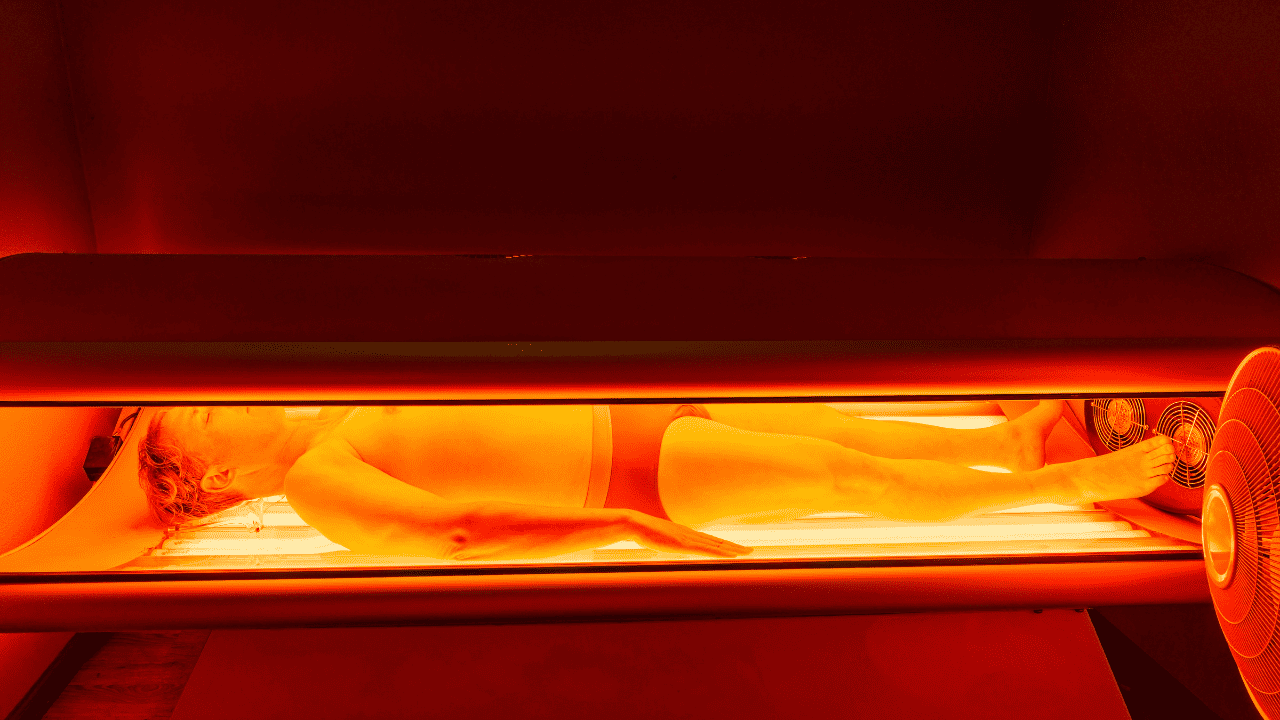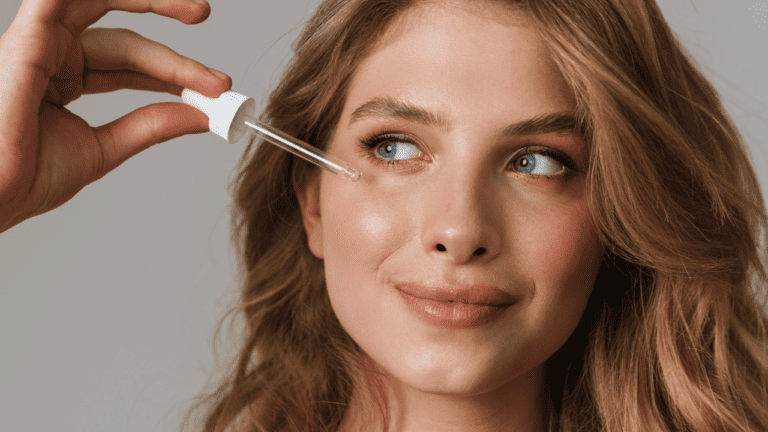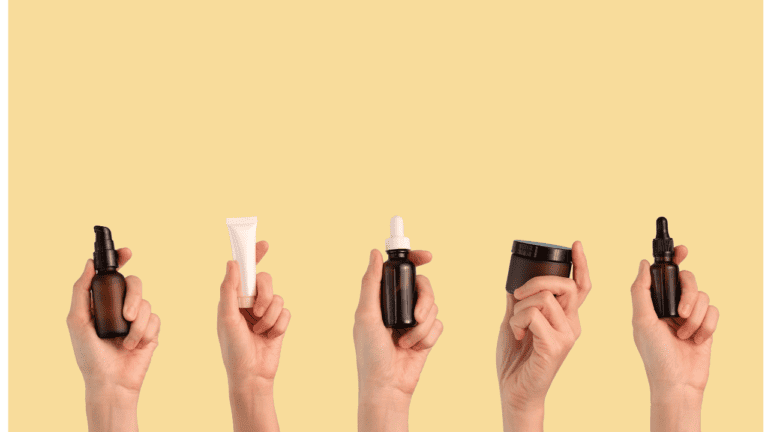In a world where skin conditions like psoriasis and eczema affect millions, finding effective treatments is crucial. These conditions are often characterized by itchy, inflamed, and even broken skin can significantly impact quality of life. In recent years, Red Light Therapy has emerged as a beacon of hope, offering a new avenue for managing these stubborn skin issues. This gentle, non-invasive treatment promises relief and healing, making it a topic of growing interest in the dermatological community.
Does red light therapy work for psoriasis and eczema?
The Basics of Red Light Therapy
Unlike ultraviolet light which can damage the skin, Red Light Therapy uses safe, low-level wavelengths to stimulate the skin’s natural healing process. Which is much needed for users who experience Psoriasis and Eczema. Due to it’s minimal side effects and non-invasive methods is can be used alongside other treatments which very low risk of irritation.
In addition Red Light Therapy is also known to reduce inflammation and improve skin texture, without the need for abrasive impact often associated with other treatments which makes it a promising option for those battling chronic skin conditions.
Benefits of Red Light Therapy for Psoriasis

Understanding Psoriasis
Psoriasis, a chronic autoimmune condition, leads to rapid skin cell turnover, resulting in thick, red patches often covered with silvery scales. These patches can be itchy, painful, and challenging to manage, affecting areas like elbows, knees, and the scalp. Psoriasis is more than a skin condition; it’s a significant emotional and psychological burden for those affected.
Role of Red light Therapy in Psoriasis Treatment
Red Light Therapy for Psoriasis, works by penetrating the skin layers, soothing inflammation, and slowing down the overactive skin cell production. This therapy’s efficacy in reducing symptoms like skin thickening, redness, and scaling has made it a valuable addition to psoriasis management strategies.
Real-life Experiences and Clinical Evidence
There have been clinical studies done to observe if Red Light Therapy truly helps people with psoriasis and there have been positive and neutral reports. Some people find relief from stubborn symptoms experiencing clearer skin in just weeks, whilst others report no change.
- For example, this study of 3 psoriasis patients using red light and near-infrared technology found that 2 of them had improvements in lesion redness, thickness, or scale, and one considered was clinically stable.
- Another study of Efficacy Of Blue Light vs. Red Light in the Treatment of Psoriasis, observed the erythema (redness of the skin) after illuminations by both blue and red light therapy. They found that blue light therapy worked better than red light therapy in this case.
Advantages Over Other Treatments
Red Light Therapy shines as a non-invasive and low-risk treatment alternative for psoriasis. Compared to conventional therapies, which often involve topical creams, systemic medications, and potential side effects, RLT offers a gentler yet effective approach. Its ability to target symptoms directly, without the systemic impacts of traditional treatments, makes it an attractive option for those seeking a safer way to manage their psoriasis.
Benefits of Red Light Therapy for Eczema
Understanding Eczema
Eczema, a common skin condition, presents as itchy, inflamed skin, often leading to discomfort and a risk of infection due to scratching. This chronic condition varies in severity and can be challenging to manage effectively, impacting both physical comfort and emotional well-being.
Role of Red Light Therapy in Eczema Treatment
Red Light Therapy emerges as a promising solution for eczema management. It utilizes specific light wavelengths to soothe inflammation and promote skin healing. This therapy’s gentle nature is particularly beneficial for the sensitive and often irritated skin of eczema patients.
Clinical Studies and Observations
Studies have shown that Red Light Therapy can significantly reduce eczema symptoms like itchiness, redness, and inflammation. These findings are encouraging for those who have struggled with traditional treatments. The therapy’s ability to provide relief without the adverse effects associated with some medications makes it an appealing alternative.
Combining Red Light Therapy with Other Treatments
Red Light Therapy can be an effective part of a comprehensive eczema treatment plan. When combined with other therapies, it can enhance overall symptom management. This multimodal approach allows for a more personalized treatment strategy, addressing the unique needs of each individual with eczema.
Risks and Possible Side Effects
Red Light Therapy is generally considered safe, with minimal risk of side effects. However, like any treatment, it’s important to be aware of potential risks. These can include skin burns and infections if the therapy is not administered correctly. It’s crucial to use FDA-approved devices and follow the recommended guidelines to minimize risks. Consulting a dermatologist before starting Red Light Therapy is always advised to ensure it’s a suitable treatment option for your specific condition.
Choosing the Right Red Light Therapy Device
Especially Selecting the appropriate Red Light Therapy device is vital for effective and safe treatment. Look for devices that are FDA-approved, as this indicates they meet safety standards. Consider the specific needs of your skin condition – for example, eczema might require a different wavelength or intensity compared to psoriasis. Devices come in various forms, such as panels, wraps, or handheld units, each suited to different treatment needs and areas of the body. Read user manuals carefully and, if possible, seek advice from a healthcare provider to find the device that best matches your requirements.
Here are a few at-home Red Light Therapy devices that are FDA-approved to consider:
- Omnilux Red Light Face Mask
- HigherDose Red Light Face Mask
- Kala Red Light Pro Panel
At Home devices are most commonly red light face masks, especially the more affordable ones, however you can still place the face mask over any areas of the body to treat yourself at home. Or you can choose a panel device that will be able to cover a larger surface area of skin at once. Still, understand that there are potential risks with red light therapy and you need ensure that you choose the right device, if unsure you should always consult with your doctor.
How to Use Red Light Therapy at Home
Guidelines for Treatment Frequency and Duration
Using Red Light Therapy at home requires adherence to specific guidelines to ensure effectiveness and safety. For both psoriasis and eczema, the recommended treatment frequency is generally 3-4 sessions per week. Each session should last about 20 minutes, with at least 48 hours between sessions to allow the skin to respond to the therapy. This regimen is based on clinical studies and expert recommendations, ensuring optimal results with minimal risk.
Choosing the Right Device for Your Needs
The strength and type of Red Light Therapy device play a crucial role in the treatment’s success. Devices range in intensity and size, from full-body panels to targeted handheld units. Consider the extent of your skin condition when selecting a device. Full-body panels are ideal for widespread conditions, while handheld units or wraps are suitable for localized treatment areas. Always choose a device that’s user-friendly and fits seamlessly into your routine.
Additional Benefits of Red Light Therapy Devices
Apart from treating psoriasis and eczema, these devices can offer other skincare benefits. They can help reduce wrinkles, fine lines, and improve overall skin tone. This versatility makes Red Light Therapy a valuable addition to your skincare regimen.
Conclusion
Red Light Therapy is emerging as a promising treatment for managing skin conditions like psoriasis and eczema. Its ability to reduce inflammation and promote healing, coupled with the convenience of at-home devices, makes it an attractive option for those seeking alternatives to traditional treatments. However, it’s important to remember that while Red Light Therapy can be effective, it’s not a one-size-fits-all solution. Consulting with a healthcare provider before starting treatment is crucial to ensure it aligns with your overall health and skincare goals.






